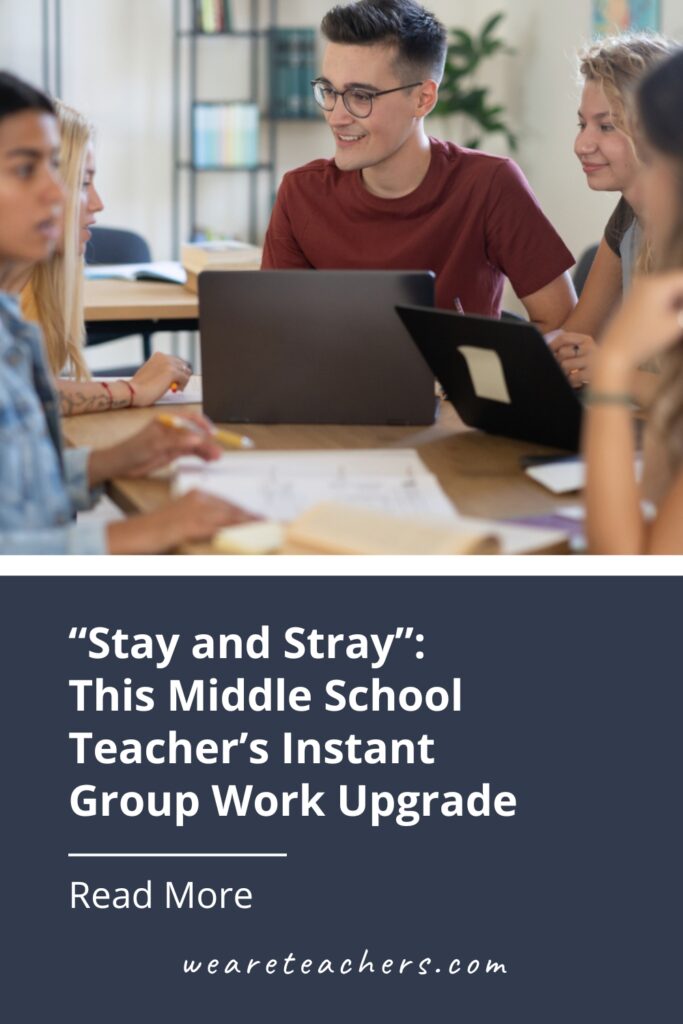True collaboration is often a challenge to achieve in the classroom. In most cases, simply giving students a task and telling them to “work together” won’t achieve the desired outcome. However, while it isn’t easy, research shows us it’s worth the effort. A 2010 study published in the academic journal “Learning and Instruction,” cited research backing up both academic and social benefits of collaborative student work. These included not only improved “conceptual grasp and application of skills,” but also “positive social relations” between students. Researchers reported these benefits continued even after the collaborate task had ended.
Earlier in my career, I was lucky to experience moments of true collaboration between my middle school students. To me, these moments were like lightning in a bottle, equal parts wonderful and impossible to replicate. Through the years, I’ve honed in on a few techniques that improve my students abilities to work together, such as hexagonal thinking or gamifying a lesson.
The latest strategy I’m having success with is called “stay and stray,” also commonly referred to as “rotating partners.” If it sounds familiar, you may have seen it featured in The Teacher Toolkit or the University of Missouri’s eMINTS professional learning resources. Stay and stray is not new, and many teachers have already found success incorporating it into their lessons. Now that I’ve implemented and seen success with this strategy, I am excited to share what I’ve learned about getting the most out of it! Here’s how I’m implementing stay and stray and how I’ve seen it work to increase collaboration in my classroom.
What is stay and stray?
The basic premise of stay and stray is simple: Within a group, one or more students are assigned to stray. This means that at appointed rotation times in the activity, they move to a different group. The remaining group members stay, and they receive a new group member when their stray leaves. This keeps the groups fresh and increases the number of peers a student works with throughout the duration of the task.
The best stay-and-stray tasks
Stay and stray is a fabulous choice for review activities. It provides a chance for students to move in what might otherwise be a sedentary activity. And unlike stagnant pairs, it allows students opportunities to learn from a larger number of their peers. A student excelling with the content has the opportunity to share their expertise with a variety of peers. Research supports that teaching or explaining a concept can provide the student in the instructional role with a confidence boost. Conversely, a student struggling to master the content can hear it explained from multiple perspectives. This goes a long way in increasing the chances they’ll hear an explanation that resonates.
Personally, I gravitate toward stay and stray for assignments that might otherwise be monotonous, or would benefit from discussion. Most recently I implemented the strategy as students completed a six-question review sheet. Each question was allotted one to two minutes of collaborative work time before stopping to review the answer. Then, the stray would rotate and the process would begin again with the next question on the sheet.
Making the most out of stay and stray
Unlike my earlier self, who was mystified when she stumbled on a successful collaborative activity, I can now recognize factors that contributed to the success of my most recent stay-and-stray rotation.
First, the questions students were presented with were designed for discussion. Rather than giving simple factual recall questions, the ones featured on the aforementioned review sheet mentioned above required justification of one’s answer. A student could, for example, correctly select the graph showing the movement of the lower-pitched instrument. But without explaining why, their answer was incomplete. This allowed students to identify gaps in their understanding, while also allowing those confident in the material to step into a teaching role.
Additionally, quick transitions between partnerships kept the activity flowing. As noted above, students were only given one to two minutes in each group. The short amount of time kept students on a tight time line. If they hadn’t discussed the question before the timer went off, they might find themselves unprepared to share. This proved highly motivating for kids! Since I regularly use this spinner strategy, they don’t know ahead of time if they’re going to be responsible for sharing out for their group.
Finally, I learned from previous, less successful stay-and-stray attempts and assigned roles to my students. The first time I introduced my students to stay and stray, they chose who would take on each role. In true middle school fashion, this lead to bickering over which role was most desirable and who would have it. Some students began making eyes at their friends across the room, trying to convince them to stay so they’d eventually be partners. These problems disappeared when I assigned the seat at each cluster of tables that would stray.
Student perspectives
It’s a great feeling to have a lesson flow and to witness collaborative discussion between students. But the even more magical moment comes when students feel it too. I was curious if my students felt as positively about stay and stray as I did. A quick survey showed promising data! When asked if they enjoyed stay and stray, one student responded, “YES, it is very helpful to get to work with different people because the more brains working on the problem the better.” Another shared, “I like the strategy because when you work with different people, you hear more ideas and help deepen your understanding of the concept.” While some responses were less enthusiastic, the overall trend supported that students saw benefits from working with a rotating variety of peers.
No prep, quick results
While stay and stray isn’t a panacea for challenges with collaboration, it does offer a starting point to get students moving and talking. And because it requires no additional materials, it can be incorporated into any worksheet-based lesson at a moment’s notice. If you’re looking for a way to increase discourse in your classroom, consider implementing stay and stray into your next lesson!
For more articles like this, be sure to subscribe to our newsletters.


